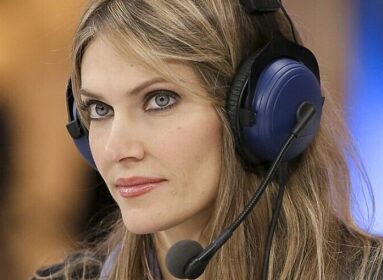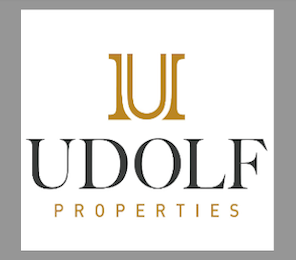WEST HARTFORD – Over the next four months, four renowned Jewish artists and art scholars will bring a discussion of Jewish visual arts to greater Hartford.
“Exploring Judaism through the Visual Arts,” co-sponsored by Congregation Beth Israel with various community partners, kicks off at the synagogue on Sept. 24. The Selichot program will feature artist and Beth Israel congregant Robert Kirschbaum, professor of fine arts at Trinity College.
Kirschbaum will present “Towards a Visual Midrash: ‘The 42-Letter Name’ and Related Work,” based on his recently published limited-edition artist’s portfolio, “The 42-Letter Name.” A book of 42 abstract prints, white lines on a black field, the work reflects Kirschbaum’s contemplation and evocation of the name of God, a name derived from the first letter of each word found in “Ana B’Koach,” a 42-word prayer nearly 2,000 years old.
The idea for the series developed after Beth Israel’s Goldfarb Learning Center acquired a copy of “The 42-Letter Name,” and Cantor Pamela Siskin and librarian Jane Zande asked Kirschbaum to speak on the book. “Jane and the cantor felt that this work, itself a work of art, could best be used as a catalyst to a broader discussion of the role of visual arts in Jewish life; some might even say that this is a somewhat overlooked topic in normative Jewish practice,” the author says. He suggested inviting colleagues as speakers in what became the four-part series.
Of his motivation and Sept. 24 talk, Kirschbaum writes:
“The image of the ancient city of Jerusalem and its Temple, central to Judaism, has long sparked the imagination of artists in the West. Although the reality of the city’s 16th-century Turkish battlements and the octagonal based Dome of the Rock have often been imposed on the artistic vision, images of Jerusalem and the Temple are most often inspired fantasies. Whether utilized as background for allegory, or as the central subject, such pictures have historically conveyed a continuous, dynamic and powerful array of symbols.
“Raised in a secular environment, I nonetheless absorbed the fundamental idea that we Jews are a people whose experience has been shaped by exile; that our return to our most sacred space awaits the miracle of redemption. Aware of our dispersion, I have found a need to internalize this ideal, to contain my sense of the sacred center, and to carry a sacred space within the precincts of my imagination. For more than thirty years, my art has been a means for me to reconcile the existence of tangible sanctified architectural elements in the home and in the synagogue with the broader significance of the Temple, its destruction and its mythic re-creation. Recognizing that this work of architecture is the single most potent image in a religion that eschews representation, I have, in my art, undertaken to explore the symbol of the Temple and the consanguineous impetus toward abstraction.
“My talk will address the mix of reason, imagination, and memory—both personal and collective—that informs my art. I will emphasize work of the last five years, particularly my print folio/artist’s book, “The 42-Letter Name.” Throughout, I will emphasize my focus on the Temple—its history, and its meta-history, from Creation to a projected aspirational vision of a perfected world.”
The series will continue monthly through November:
SUNDAY, OCT. 23 – Samuel D. Gruber presents “Arise and Build: American Synagogues and Jewish Identity.” Gruber is director of Gruber Heritage Global in Syracuse, N.Y.; and president of the International Survey of Jewish Monuments. He is known worldwide as an expert on synagogue architecture, Jewish historic sites and historic preservation. Gruber is author of “American Synagogues: A Century of Architecture and Jewish Community” (2003) and “Synagogues” (1999), as well as numerous articles and survey reports on Jewish monuments and the “Samuel Gruber’s Jewish Art & Monuments” blog.
SUNDAY, NOV. 20 – Matthew Baigell discusses “We Are Living in a Golden Age of Jewish American Art and Don’t Really Know It” at the New Britain Museum of American Art. Baigell is emeritus professor of art history at Rutgers University. He has published more than 20 books on American and Jewish American art, including, most recently, “American Artists, Jewish Images” (2006) and “Jewish Art in America” (2007). He co-edited “Jewish Dimensions in Modern Visual Culture: Antisemitism, Assimilation, Affirmation” (2010) and has written several articles on contemporary figures including Archie Rand, Richard McBee, and Ruth Weisberg.
SUNDAY, MARCH 25, 2012 – Richard McBee presents “History of Jewish Art.” McBee is a painter of contemporary Biblical subjects and a writer on Jewish art. He was program director of the Alliance of Figurative Artists in the 1980s and member of the Biblical Painters Group. In the ‘90s he helped found the American Guild of Judaic Art and the Jewish Art Forum held at several Manhattan Orthodox synagogues. Since 2000, he has written a column on the Jewish arts for the Jewish Press and continues to exhibit paintings and curate Jewish art exhibitions. In 2008 he was a founding member of the Jewish Art Salon and was recently cited in “Jewish Art in America” by Matthrew Baigell.
The Selichot program featuring Robert Kirschbaum will be held on Saturday, Sept. 24, 7:30 p.m., Congregation Beth Israel, 701 Farmington Ave., West Hartford. For more information call (860) 233-8215, ext. 230 or email jzande@cbict.org.








 Southern New England Jewish Ledger
Southern New England Jewish Ledger










